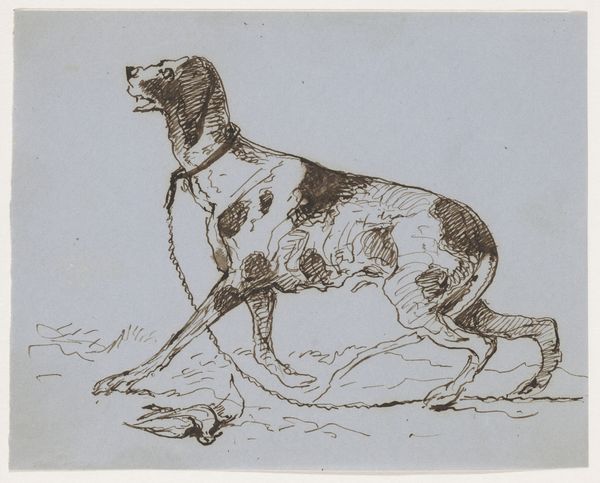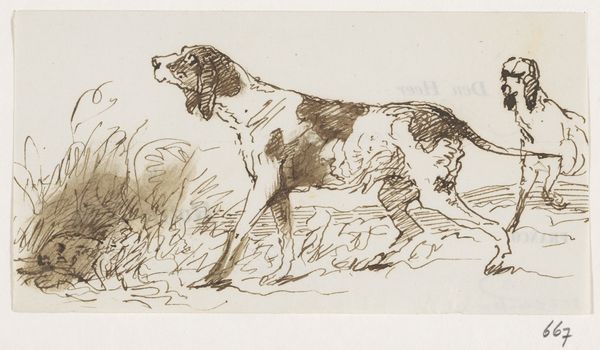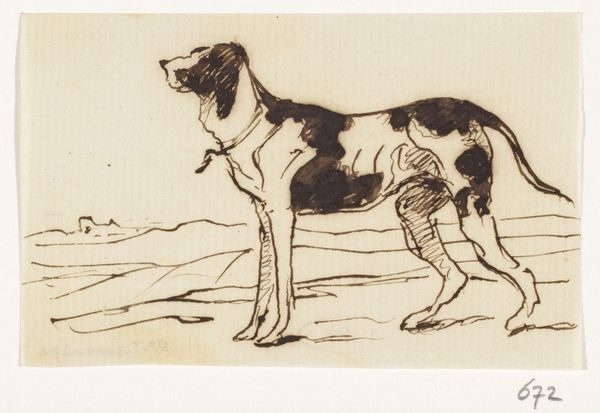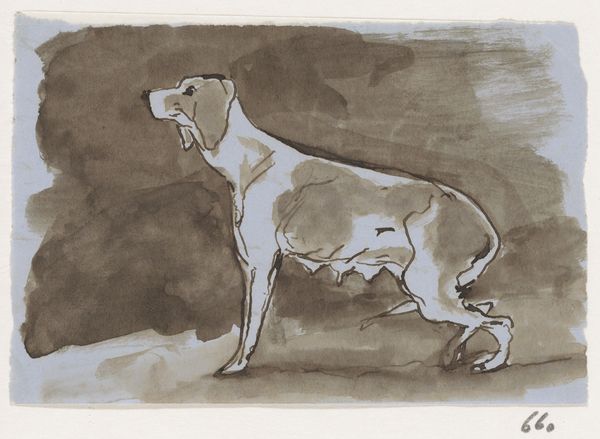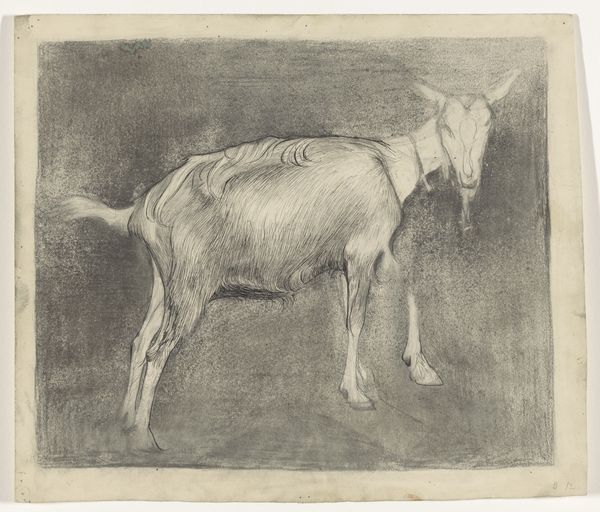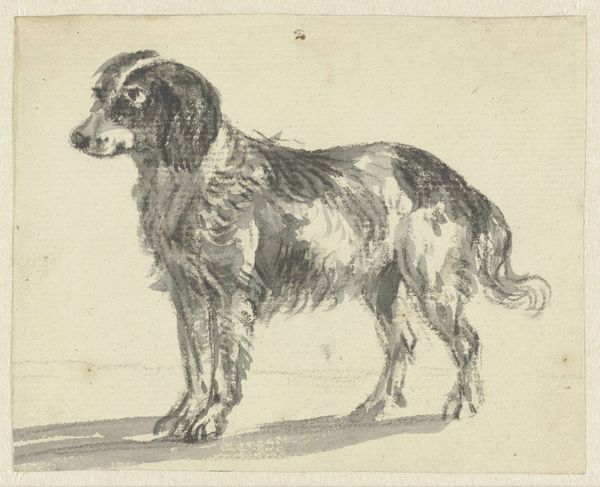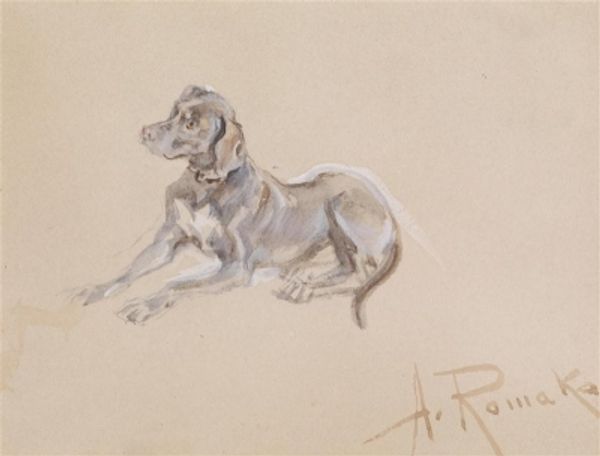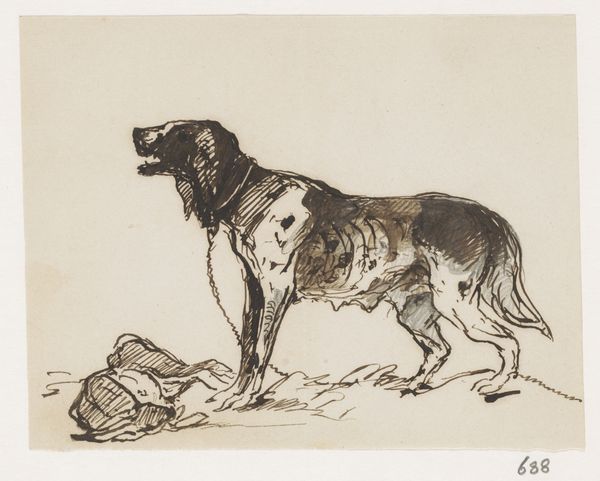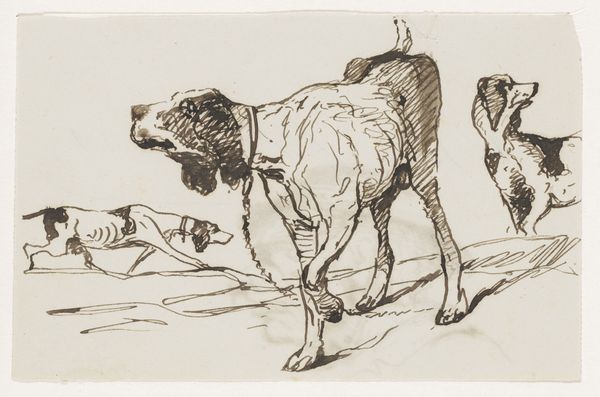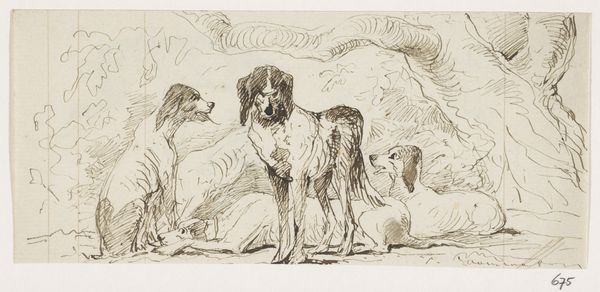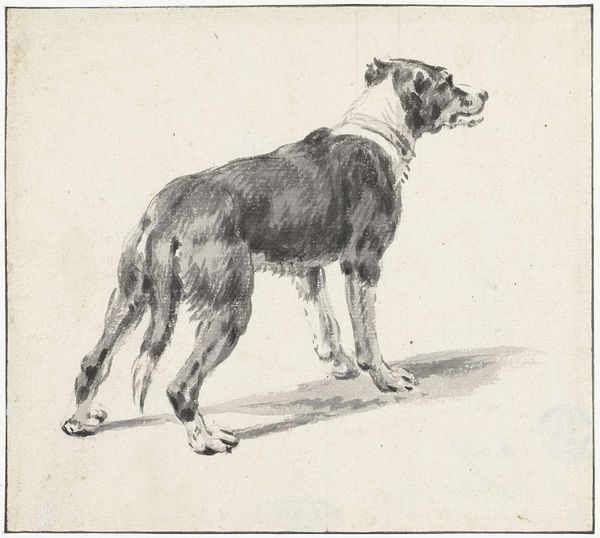
drawing, ink, pen
#
drawing
#
pen sketch
#
pencil sketch
#
landscape
#
figuration
#
ink
#
pen
#
realism
Dimensions: height 68 mm, width 124 mm
Copyright: Rijks Museum: Open Domain
Curator: Look at this tender drawing. "Jachthond," or "Hunting Dog," sketched by Johannes Tavenraat sometime between 1840 and 1880. It's currently housed right here in the Rijksmuseum. A simple pen and ink piece. Editor: It has a strange melancholy, doesn't it? The dog is alert, but there’s a fragility to the linework that hints at something deeper than just canine alertness. Is he waiting? Abandoned perhaps? Curator: Maybe. The interesting thing about Tavenraat is how he manages to evoke a real sense of place, even with such sparse detail. Look at the implied landscape—it suggests open space and bleakness at the same time. Editor: And the lines themselves! They're almost like a palimpsest of societal expectations placed upon the animal—obedience, service, subservience. It's not *just* a dog, is it? It represents centuries of co-evolution, exploitation, and a skewed power dynamic. Curator: I think you're reading into it too much. I see a portrait. An attempt, perhaps, to capture a certain...nobility, despite the dog’s position within a hunting context. The slight upturn of the head, the almost dignified stance. Editor: Dignity manufactured by human expectations! This work raises essential questions about how we categorize and confine living beings for human consumption. It underscores the ways in which domestication can be seen as a form of subtle, persistent control. Even in this quick sketch, we confront uncomfortable power structures. Curator: Still, you can’t deny the technical skill. The economy of line! With a few strokes, Tavenraat gets the muscle structure just right. It's a working dog; you can feel the tautness. I appreciate that directness, no frills. It’s a simple sketch executed really, really well. Editor: It *is* executed skillfully; I’ll give you that. But, art is never made in a vacuum. The “simple sketch” reflects ingrained social roles—man, animal, work, obedience—interlocking to justify hierarchies of power and domination that we have inherited until today. The drawing calls to mind not the innocence of a loyal companion, but our systematic instrumentalization of non-human animals and ecological devastation caused by industrialized agricultural systems. Curator: Gosh, all that from one little dog? For me, it simply exudes that late romantic feel. Editor: Absolutely! Seeing those dynamics makes the sketch powerful.
Comments
No comments
Be the first to comment and join the conversation on the ultimate creative platform.

